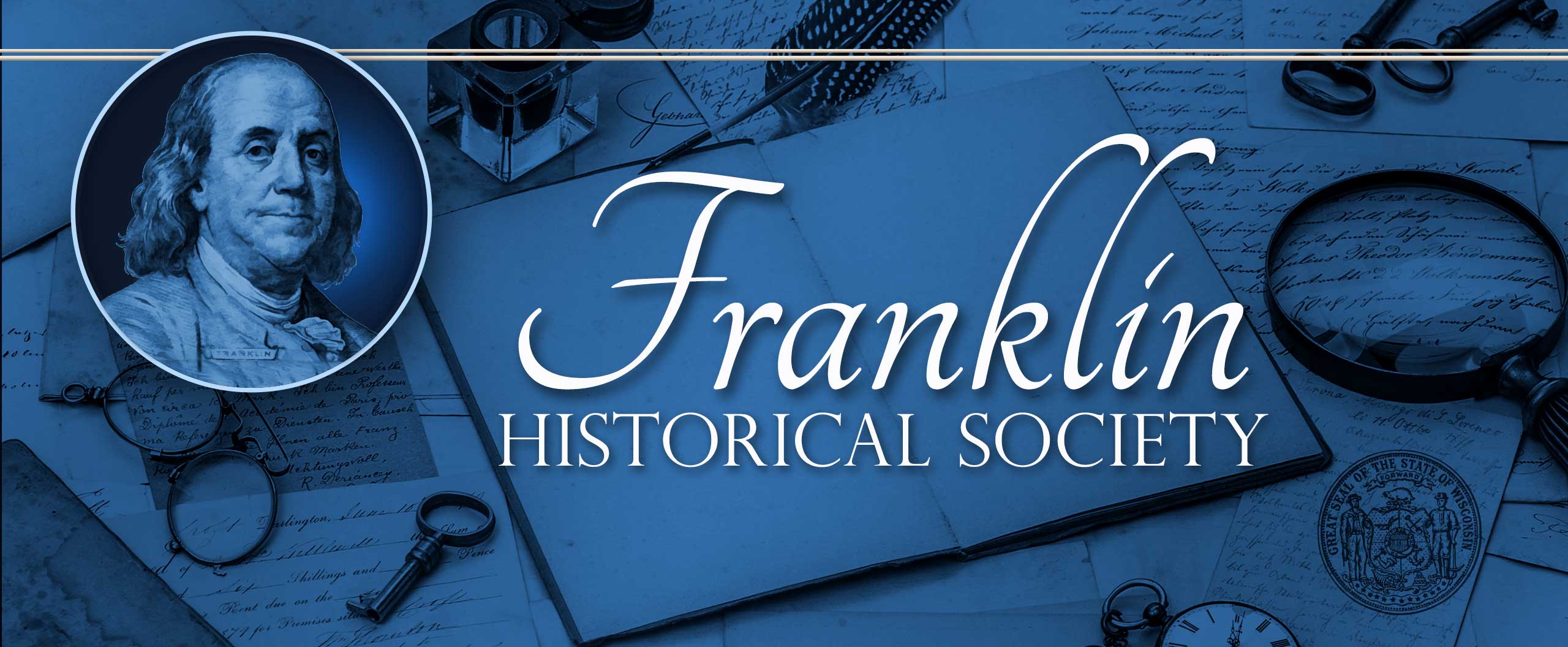Historically Speaking…
By Doug Schmidt
Welcome to the new Franklin, Wis., Historical Society website!
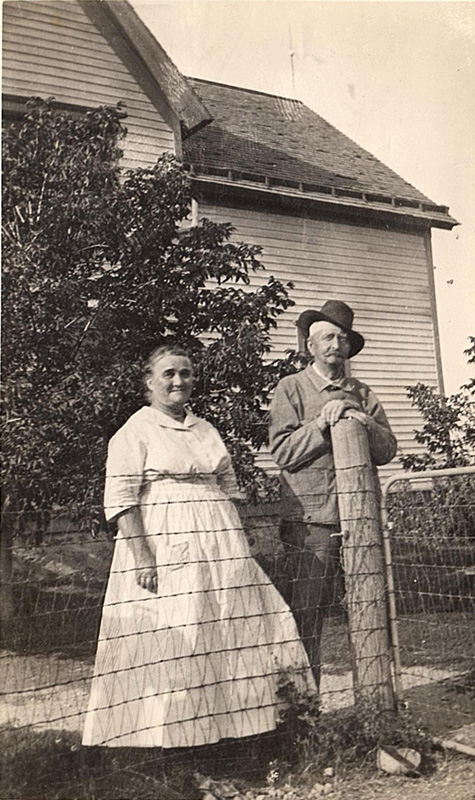
Marie and Fred Ludwig pose at the gate of Ludwig farmhouse in 1908
I was elected president of the FHS in May 2025, but I am not new here. My roots in Franklin history go back more than 100 years to 1875, when my great-grandfather, Fred Ludwig, emigrated here from Germany at the age of 21.
He bought 80 wooded acres at 8520 South 68th Street, then known as Colby Road, which he cleared to establish a dairy farm. In 1880, he married Marie Riebe, the step-daughter of Fred Mueller, who operated a farm on the opposite side of the road. Fred expanded his holdings in May 1902, when he paid $6,400 to purchase another 80-acre plat a half mile up the road and he sold his first farm to Oscar Schellhaas. Fred and Marie raised five children and retired to West Allis in 1919 after turning over control of the farm at 7979 Colby Road to their second eldest son, William Ludwig.
William married Emma Wendt in 1912, and the family roots grew deeper as they raised five children – Clarence, Marie, Grace, Lucille (“Lu”), and Fredrick (“Fritz”). There were plenty of chores for every member of the Ludwig clan, from feeding the animals to collecting eggs and milking the cows. Lu, who became my mom, grew so immune to milking the cows by hand that she couldn’t stand to drink an ounce of milk by the time she became an adult. There was also a vegetable garden for Emma and her daughters to tend to while William tilled the fields with rotating crops of hay, corn, wheat, and soybeans. The Ludwigs also maintained an apple orchard next to the homestead.
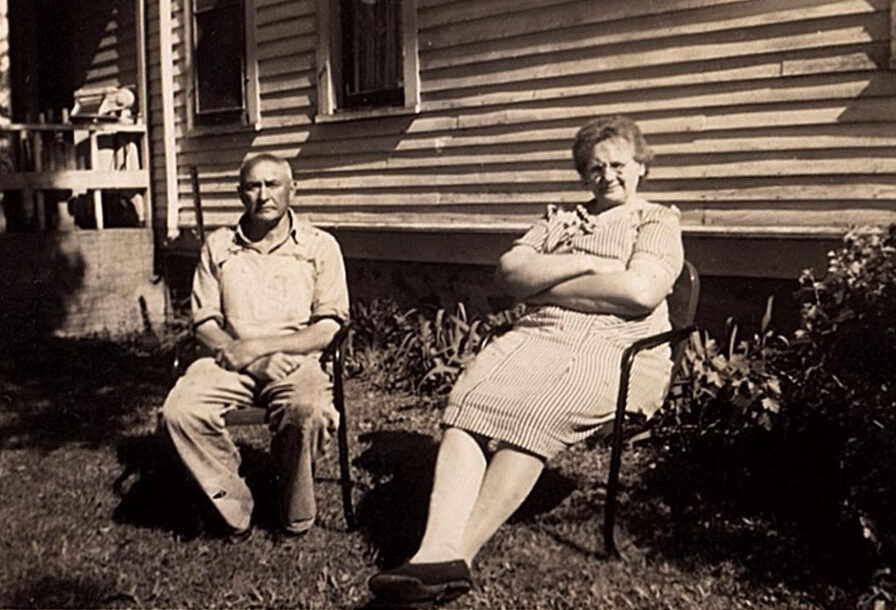
Emma and William Ludwig relax in front of their home in July, 1947.
And if maintaining an 80-acre farm wasn’t enough, William also rose before the crack of dawn each morning to operate a milk route. He started with a three-horse wagon hauling milk cans to the dairy for area farmers. A few tense moments erupted during the Great Depression in 1933 when some farmers went on strike to demand that the dairy pay them higher prices for their milk.
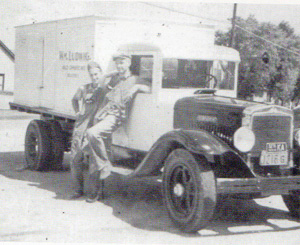
Operating the Ludwig milk route in 1939 were Clarence Ludwig (right) and his brother-in-law, Marvin Hareng.
William was caught in the middle of the dispute. He felt obligated to transport the milk cans to the dairy for farmers who didn’t support the strike. Fearing that some strikers might show up in the middle of the night to vandalize his milk truck, he received permission from the sheriff’s department to keep a shotgun at his bedside to deter any potential vandalism. Fortunately, there were no incidents, but a couple of would-be vandals did board the milk truck at one stop and attempt to dump the milk. They were thwarted when William slammed the door shut and locked them inside until the authorities arrived to arrest them.
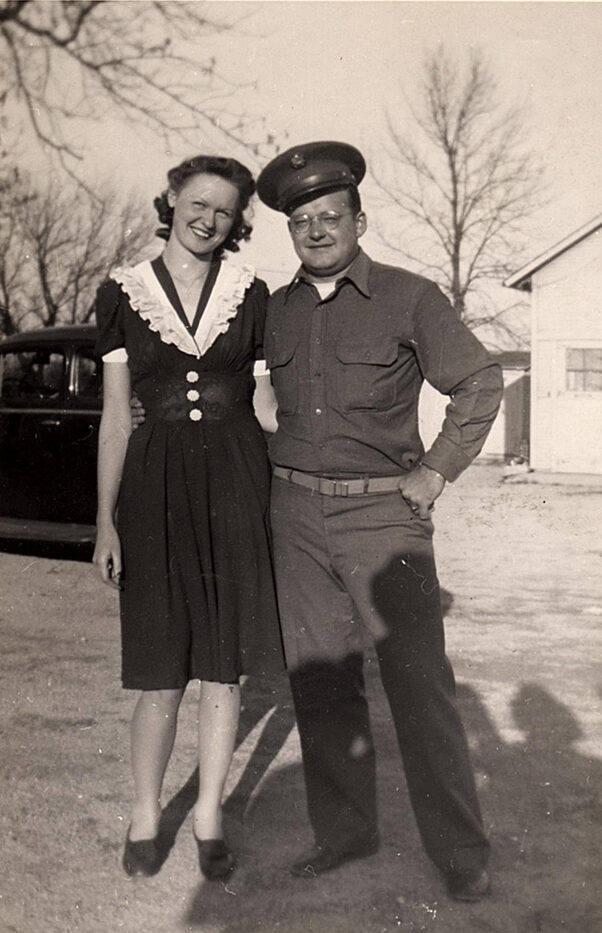
On leave from the U.S. Army in 1941, Butch Schmidt poses with his future wife, Lu Ludwig.
Hauling milk remained a Ludwig tradition carried on by William and his sons, Clarence and Fritz, and son-in-law Marvin Hareng, for the next 40 years.
Lucille, better known as “Lu,” married Delbert “Butch” Schmidt while he was stationed in Fort Leonard Wood, in Rolla, Missouri, in 1943. After World War II ended, Butch and Lu moved into the upper flat of the Ludwig homestead on 68th Street, and they welcomed me to this world in January 1948. My folks bought a half-acre lot in the apple orchard next to the homestead in 1954, and we moved into a new, modest ranch house when I was seven years old. Thus, I was raised a country boy but not truly a farm boy because my dad spent most of his adult life commuting to an Evinrude Outboard Motors plant on Milwaukee’s north side, where he assembled cartons.
Most important to my upbringing was the fact that my dad grew up a huge sports fan. His dad, George Schmidt, ran a tavern located a couple of blocks from old Borchert Field, the home of the minor league Milwaukee Brewers baseball team. That proximity afforded my dad the opportunity to serve as a ballboy for the Brewers during the Depression.
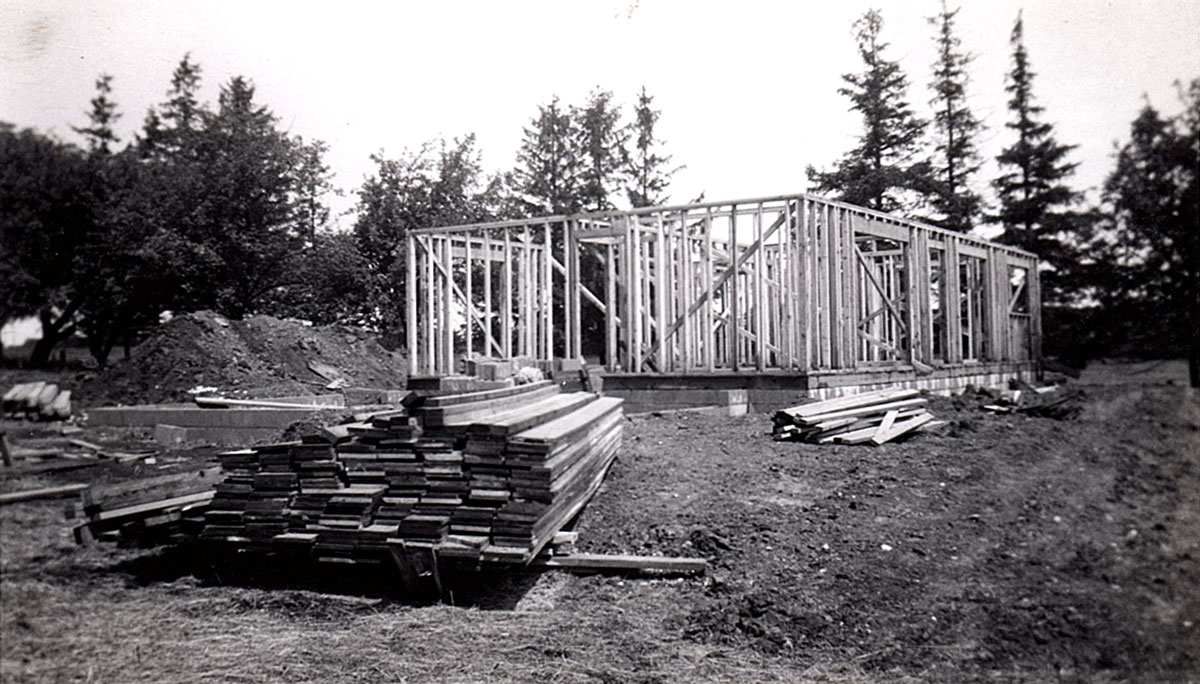
In 1954, construction began on Butch and Lu Schmidt’s new home in the former apple orchard of the William Ludwig farm on South 68th Street.
The Brewers were a popular attraction for nearly 50 years when the Milwaukee County board authorized funding for a new baseball stadium to help lure a major league baseball team to Milwaukee. In March 1953, those efforts were rewarded when Boston construction magnate Lou Perini got approval from the National League owners to move his failing Braves franchise to Milwaukee just as construction of the new stadium was being completed.
The arrival of the Braves was perfect timing for a boy my age. Many summer nights, I would lie in bed next to my dad listening to Braves broadcasts on his transistor radio and occasionally we would get tickets to see legends like Aaron, Mathews, Spahn, Burdette, and Adcock maintain a winning tradition. And over the course of 13 seasons, the Braves never had a losing record in Milwaukee!
One advantage of growing up in the country was the abundance of open fields to play ball in. If I could round up four or more friends in the area, we would have enough to play a pickup game of hardball. All we needed was a few scraps of cardboard – or hubcaps – to use for bases and a few bales of hay to serve as a backstop. To quench our thirst on those hot, sunny afternoons, we toted gallon jugs filled with fresh well water.
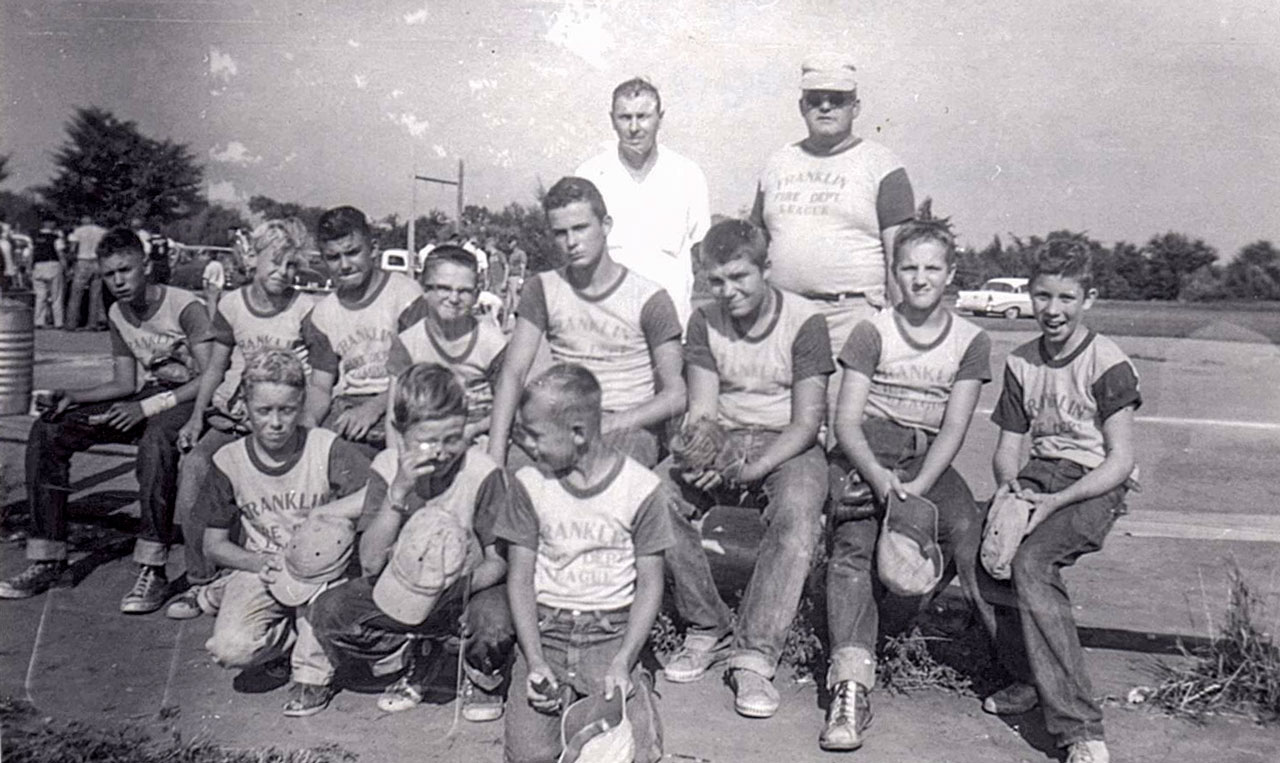
The White Dove team managed by Butch Schmidt (top right) and assisted by Bob Radler captured the 1960 Franklin Fire Department Little League championship.. The team included (second row, from left) Greg Everett, Dennis Radler, Ken Toutant, Doug Schmidt, Tom Babcock, Albert Ormsby, Mark Weissbrodt, Bill Brody, (front row, from left) Jim Rosenwirth, Ernie Vretnar and ballboy Carl Raether.
The Franklin volunteer fire department also started sponsoring a little league in 1959, and my dad was more than happy to manage my team for three years. I received my first trophy when we won the championship in 1960.
Baseball was my passion, and by the age of eight, I had also become an avid baseball card collector. My buddy Dave and I would often ride our bikes to the beer depot at 76th Street and Loomis Road, where my 50-cent allowance would buy five nickel packs of baseball cards and a 16-ounce bottle of Double Cola. I wasn’t a gum chewer, so I often repackaged the doubles I accumulated with the slab of pink bubble gum that came with the packs of cards and sold them to my classmates at school. I had to sell them on the sly, however, because gum chewing was frowned upon by the teachers – along with my own brand of capitalism.
Growing up in Franklin’s rural environment also meant there were also a lot of quiet times, and since I had no brothers or sisters, my mom often felt bad when I had no one to play with. She taught me how to ride my bike, and she also made great picnic lunches that featured Kool-Aid and my favorite type of sandwich, egg salad. I always knew that when I prepared to catch the bus for my first day of school, my lunch bag contained the world’s greatest egg salad sandwich!
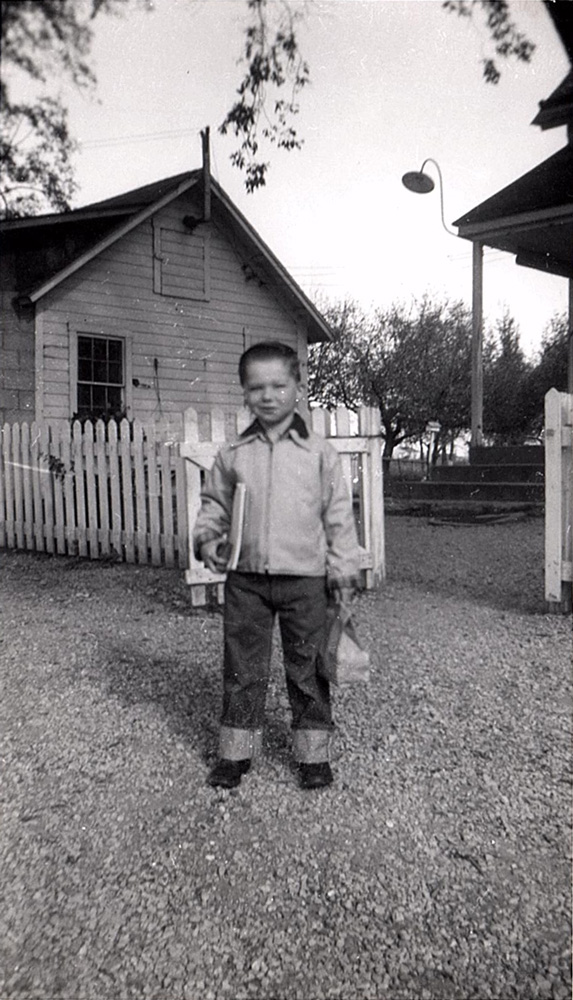
In September 1954, six-year-old Doug Schmidt posed in the Ludwig farm yard for his first day of school at Ben Franklin Elementary.
In 1953, Franklin merged its one-room schools into a new Ben Franklin Elementary located on the western edge of the Ludwig property and the William Boldt farm along South 76th Street. I had the privilege of entering first grade there in 1954. During the 1950s, the only threat to our tranquil existence was a remote geopolitical debate called the Cold War.
The federal government responded by constructing underground Nike missile sites around major metropolitan areas to repel a potential missile strike by the Soviet Union. One of those sites was planted in Franklin off the southeast intersection of Ryan Road and 60th Street. That area would later be developed into the city’s first industrial park. Correspondingly, public buildings were designated nuclear fallout shelters, and school administrators trained students like us to hide under our desks in case the Soviet Union managed to decimate our school with a nuclear bomb.
Times were definitely changing. Franklin was emerging from its cocoon as a farming community with the development of a couple of subdivisions that produced many of the kids who would remain my friends all the way through high school. By 1960, it was apparent that the City of Franklin needed its own high school. Funding for the construction of a new school was approved on South 51st Street, and in the fall of 1962, Franklin High opened its doors to 350 students. I had the good fortune to be a member of the first freshman class.
Life at Franklin High would soon encompass the next chapter of my life.
